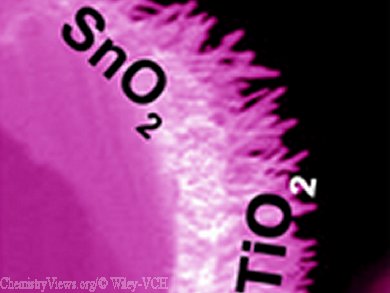Self-powered photodetectors and bendable electronics represent two popular research areas that aim to benefit next-generation devices. Rechargeable lithium-ion batteries have been intensively studied during the past decade, with major focus on the anode materials. SnO2 was identified as a promising candidate with a high reversible capacity and moderate operating voltage. However, practical applications were hampered by a low initial Coulombic efficiency and cycling instability.
Di Chen and Guozhen Shen, and co-workers identified SnO2@TiO2 heterostructures as superior alternatives to pure SnO2, with high initial Coulombic efficiency, good reversible capacity, and excellent stability over 100 cycles. This composite material, grown on carbon cloth, can then be used as a binder-free anode in the assembly of fully flexible batteries.
The SnO2@TiO2 nanostructures exhibit enhanced electron lifetimes because of the good match of the band gap between the SnO2 and TiO2 materials. Therefore, the researchers from Wuhan and Beijing Universities, China, were able to assemble self-powered UV photodetectors with SnO2@TiO2 bound to fluorine-doped tin oxide (FTO) as the photoanode.
The combination of these desirable properties will greatly influence the development of dye-sensitized solar cells, photocatalysts, supercapacitors, and the development of photodetectors for applications in environmental and biological research, optical communication, sensing, and missile-launch detection.
- SnO2@TiO2 Heterojunction Nanostructures for Lithium-Ion Batteries and Self-Powered UV Photodetectors with Improved Performances,
Xiaojuan Hou, Xianfu Wang, Bin Liu, Qiufan Wang, Zhuoran Wang, Di Chen, Guozhen Shen,
ChemElectroChem 2013.
DOI: 10.1002/celc.201300053




